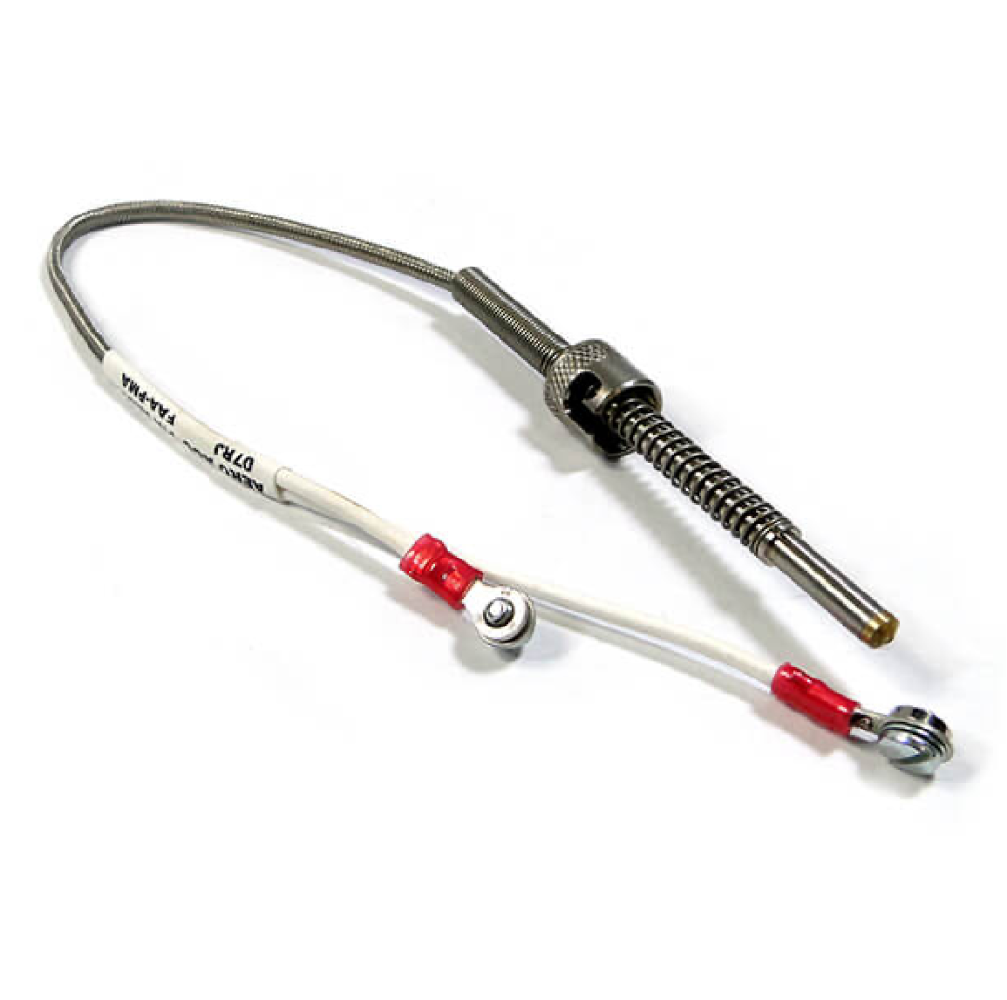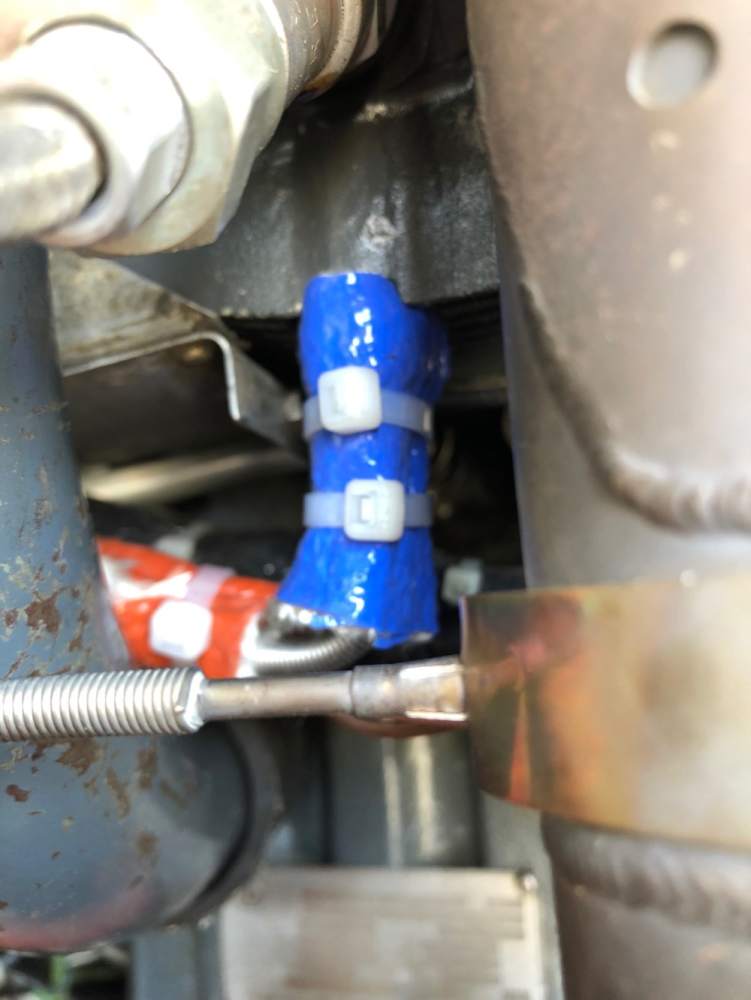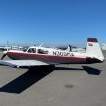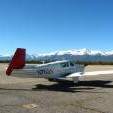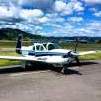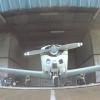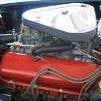Leaderboard
Popular Content
Showing content with the highest reputation on 03/24/2025 in all areas
-
@1967 427 called it. Manual 106 lists the CHT probe as pn AN5546-1. This is the mx manual, not the IPC. @Vance Harral is correct, this probe is a thermistor, but the ‘67F uses a different probe than his ‘76F. The AN5546-1 probe is secure into a bayonet fitting that is screwed into the cylinder head. If a JPI or E.I. engine analyzer is installed that is not certified as primary, then a ring CHT probe is used in conjunction with the bayonet fitting and the factory CHT probe is retained to be legal. This is a picture of an Alcor CHT probe, equivalent to the AN5546-1, from Aircraft Spruce. It’s a two-wire probe. This is a picture of an E.I. ring CHT probe installed under the factory bayonet CHT probe fitting. On my ‘63C, I wrapped the factory bayonet and E.I. ring probe together in the fire sleeve and think I get a much more accurate reading.3 points
-
I've seen these type of threads on multiple forums and while our Mooney do well in X-wind, I still don't like these threads. Some members misremember or exaggerate the numbers and mislead others about the capabilities of the airplane. Touching down is the easy part... slowing down and taxing in are the real challenge. The closest I've ever come to damaging an airplane was getting out of a C140 when a gust almost took the airplane into the hangar door. The bigger the number, the more questionable becomes the judgement if you damage the airplane. My suggestion is to use a number you're comfortable with or divert instead of going by someone's max number on the internet.2 points
-
I would definitely not use that descriptor. It's an incredibly small number of planes in the fleet that have used G100UL in total and it's yet to be determined if they've "not had any issues." Additionally, ~300-400 gallons per month is a tiny amount of the fuel sales in the area.2 points
-
My Garmin 327 is in - will be getting that tomorrow, thankfully. Now gonna save up for the autopilot and get some hours on this engine. Aircraft ownership does have its ups and downs but, I sure do enjoy flying… -Don2 points
-
The OEM CHT probe on that vintage of Mooney is not a thermocouple. It's a thermistor, which works on a different principle, and uses the engine itself as the ground connection (hence why there is only one wire to the probe). CHT probes from JPI and Insight are 2-wire thermocouples, they simply don't work with the original CHT gauge in the Garwin cluster. That's the whole reason "piggyback" thermocouple probes are used when a non-primary engine monitor is installed in an aircraft which needs to retain the OEM CHT probe. It allows the original thermistor to stay installed to drive the original gauge. This is the CHT probe that fits our 1976 M20F: https://www.aircraftspruce.com/catalog/inpages/rochcht.php. Older M20F models may use the same one, but double-check your parts manual2 points
-
My plane is missing the trim jackscrew boot. I’ve considered replacing it but have subsequently decided I don’t think it is worth it. The jack screw is already in an enclosed area and gets cleaned and lubricated at least once a year. Additionally as has been brought up already it does make it more difficult to service the mechanism with the boot in place. Weighing the benefits and drawbacks I don’t see a compelling reason to replace it.2 points
-
I'm excited to announce that Gallagher Aviation is now a Great Lakes Aeroplastics authorized reseller and we just took delivery of a nice inventory of replacement lenses for many different Mooney aircraft. The one thing that bothered me a little bit about other competitor websites is the lack of photos of these replacement lenses so I took photos of each of them in a photo box so you know exactly what you are getting. I'm also working on good installation photos too! I have the best price compared to anyone, just add them to your cart. I will continue to invest in these products and I have them on the shelf ready to go! https://www.gallagheraviationllc.com/Replacement-Lenses_c_260.html <-- Secure link to my website www.gallagheraviationllc.com <-- Main website gallagheraviationllc@gmail.com <-- Email me with questions, concerns, or requests for quotes! 1-833-425-5288 <-- Call me here, please leave a voicemail if I do not answer 513-401-6495 <-- Call/Text/MMS me here, please leave a voicemail if I do not answer1 point
-
So, after a VERY short time in the field we have a 7% (70,000 ppm) issue! That troubles me greatly. YMMV, I guess1 point
-
1 point
-
1 point
-
I once asked Bob Kromer (Mooney factory test pilot) why the demonstrated crosswind velocity was so low and he said that the older test pilots all cautioned to be conservative because not all pilots have the same level of proficiency and most don't often practice crosswind landings. He had a personal max crosswind number that he said he was comfortable with when he was flying Mooneys nearly daily. I don't recall the exact number but it was way less than 35 knots. Somewhere in the low 20s I think.1 point
-
This could be an interesting one… technically, the G5 can only provide heading to non garmin AP. However, depending on when the G5 was installed, it was legal to use it as the altitude encoding source, so possibly that altitude is fed to the AP for altitude hold? Another interesting tidbit… my G5s were set up as the encoder and I was occasionally getting an encoder failure on my transponder. Recycling the transponder off/on would fix it. It took a long time to get the straight answer (and they were still shady), but garmin acknowledged a software issue with the G5s acting as an encoder and offered to send me their little external encoder that attaches to the transponder for free.1 point
-
Just saw that myself. The pilot stopped talking to ATC; the transponder stopped; the pilot deviated off course on final; the Mooney landed gear up. I'm thinking there was an electrical failure (I once had a total electrical failure just after breaking out and turning inbound on a VOR-A approach). But he was in controlled airspace; airlines were also inbound to the same airport. I'm guessing he was mentally overloaded trying to stay on approach (one airliner requested ILS; what were ceilings?), and couldn't deal with navigation, worrying about ATC & Tower, worrying about the airlines, that he had trouble with emergency gear extension. But the landing airliner complimented him for being right on centerline!1 point
-
My two cents... I was searching for an E 20 years ago when I found my F at my local airport. The purchase was easy so I bought it. The F has always been rated as a best buy in the Mooney universe (plenty of articles written). Years ago, Russell Stallings (SWTA) told me that the big difference between an E and F, is you'd find yourself working the trim wheel a lot more in the E. The same likely applies to a J (less pitchy than the E). Why would I personally want a J even though my F has all the mods? I wouldn't mind having a newer airframe and the J cowls are just cleaner. Would I trade my F for a J? Only if the J was 20 years younger (24 V '87 or newer). How much more would that cost? All things equal? 75% more. Buy a J 10 years younger than my F, and you're in the 30 to 50% range now that the market has slowed and there's more inventory. Just take a look at Trade a Plane and Controller. Just don't forget about the taxes you'll throw down the drain with the transaction.1 point
-
Depends on airspeed. More airspeed = more rudder authority. One of the reasons partial flaps helps. If you can keep your speed up sufficiently and fly it on to the runway, you’ll hit the wingtip before you run out of rudder. Misjudge and you’ll balloon viciously. Realistically, though, I agree with Rich. About 35 knots.1 point
-
WOW! I'm going to stick with Mark at Top Gun. The INSPECTION is performed quickly (a few days) and I get a very detailed, organized, 'punch list' with each item clearly labelled 'airworthy' or 'discretionary'. I 'sign off' on what I want done and return via email. AFTER that, the work is performed. Typically, when I call I can speak with someone immediately; if not, I've always had my call returned within a day. Emails answered within a day, as well.1 point
-
On a long body it is somewhere between 35 and 40 KT, landed at KIAD RWY 01 with 35 gusting 40 Kt from 270 about a year ago, runway is 150ft wide, lined up with one of the high speed taxiways, use full flaps, reduces the risk of a stall or tail strike in gusty conditions, started on the right side of the runway and traversed it to the left towards the high speed taxiway, nobody complained1 point
-
Yes, 50GB is very low for home use (given TV streaming).. I get 100-200Mbits consistently, but I use about 1TB/month with all of the TV/Video. Especially where I went to 4K when I had the available bandwidth. As for a window in a house, no, you really need a good view of the sky (roof) Also, if I am flying somewhere away from home, my wife is not going to be without internet. So the home starlink stays at home.. A flying starlink is on a "I don't really need it" in a Mooney.1 point
-
speed cost more. Don't get stuck on purchase price of the plane. You will spend much more money operating and maintaining the plane. Newer planes within a group will have less ADs on them. Also carburator vs fuel injected.1 point
-
That is my understanding and I pointed it out in that video (if you haven't watched it). This link goes right to the references and questions of some possible connections.1 point
-
1 point
-
Hi All, I'm on the BAS Parts Sales mailing list and just saw they listed an M20K in their parts hangar. They'll note new planes every few weeks. Just an FYI for anyone looking for stuff. I have no financial interest in BAS, just a happy customer due to their good communication and value with prior transactions. HTH1 point
-
That's the same one I referenced previously that was sitting in Hollister. See here for direct part of video.1 point
-
Data caps are annoying for home service, and a 50GB cap is pretty low. For mobile use in the Mooney though, 50GB should be adequate for the limited hours we fly. This pricing is pretty great in the context of that mission, too. I'm excited to hear feedback on how well it works. Even the 1Mb "overage" speed is pretty sweet. The passengers may not like it, but I remember when that's all the speed I got at home. I could definitely download a satellite image over that connection in a pinch.1 point
-
I haven’t flown in strong winds on a daily basis since I left Denver in ‘89. I seem to recall it is around 35 KTS where you run out of rudder.1 point
-
Plans are now documented: >Business LOCAL PRIORITY - 50GB $65/MO >What is the maximum speed the Priority plans will operate at? >Local Priority: 350 mph >Global Priority: 550 mph Data will be limited to 1Mbit/sec if you run out of data and don't "top off"1 point
-
Rode through a hard one into SAT. Delta, back when the pilot flying stood in the cockpit door and said good bye to pax. FO was at the door, with the door shut behind him. Me being me, asked who the Navy pilot was. He looked sheepish and stared at his toes and say, "I have no excuse, I was Air Force." I almost felt sorry for him, but it was hard enough, I actually look out for a gear leg sticking up though the wing.1 point
-
My instructor had me do this when working on cross wind landings pre-solo. I had a tendency to freeze the controls in the flare rather than continuing to fly the plane. I tend to switch to slip fairly far out on final to get everything stabilized.1 point
-
1 point
-
Hello all, the latest electric compressor is approved by an AMOC (Alternate Method Of Compliance) in the late 1990s to address the AD. These pumps were tested in a lab using many different failure modes and various environments to FAA standards and FAA witnessing. Hundreds, if not thousands have been sold over the past 30+ years. Very, very few failures have occurred which have required replacement. I'm an airplane owner as well and I get it. Cheap alternatives are enticing. However, we have costs of doing business as it relates to FAA PMA, inspections, paperwork, liabilities, safety, insurance and etc. Any business owner understands that there is a cheap way and a right way especially when working in a highly regulated industry like aviation. Many times, I see Bob Fields Inflatable Door Seal listed as an upgraded STC when selling an airplane. An unapproved modified door seal is not. To each their own. Wishing everyone blue skies and safe flying! Tom1 point
-
My experience on a Lycoming IO-360 is that compare to a bayonet probe, the spark plug gasket probes read about 20 deg F high (because the spark plug is the hottest part of the head) and the piggy back probes read about 20 deg low (because they are reading surface temperature rather than the temperature in the well).1 point
-
No that’s the spark plug probe. For the piggyback probe to work, it’s installed into the cylinder probe location to run the JPI, then the Factor probe slips into the piggy back fitting. My understanding is the shop put the EDM-700 in and kiboshed the Garwin/Rochester probe. I just need to trace and find the single wire that was omitted. At least that’s how my airplane is wired. Learning things, Matt1 point
-
Oil change today to X/C, cut filter and much lower amounts of magnetic and non magnetic flakes! Took her for a normal flight to start learning the new normal. With 10.5 hours on her, gonna be a minute until she normalizes. -Don1 point
-
Is this the one you mean? It's still on the JPI website. https://www.jpinstruments.com/shop/m113-38-cht-gasket-probe/1 point
-
1 point
-
1 point
-
Don’t have manual for 67F, but according to my manual the correct pn for a 67E is AN5546-11 point
-
Interestingly enough, I just discovered that AD 98-21-21 no longer exists. It was superseded by 98-21-21 R1. And that AD does not apply to my airplane. It was installed under STC SA4213WE which is not on the AD https://drs.faa.gov/browse/excelExternalWindow/D140D1B5B0D327DC86256A0A006E2297.00011 point
-
1 point
-
Or you could just buy the STC’d inflator from @tomgo2 and have a legal installation. The manual bulb works great and is simple and weighs virtually nothing and has universal parts that are easily replaceable. This looks like a solution in search of a problem.1 point
-
True, but I was referring to the very common error of a pilot neutralizing the crosswind correction on touchdown instead of going to full crosswind correction. It makes a difference even with a light crosswind. I can't count the number of times I've seen a pilot having trouble while rolling down the runway after landing, trouble which disappears as soon as I remind hem to turn those ailerons into the wind.1 point
-
Excellent, thank you! My son isn’t going to like his legos disappearing, but he’ll be happy if they help fly him to Disneyland!1 point
-
1 point
-
I set this page up on the MFD in front of my wife’s seat to answer all of the questions she has had on our flights to see the kids and grandkids. How much longer? What time will it be when we get there? How fast are we going? Do we have a tailwind? Are we going to have enough gas? Where’s the closest bathroom? Now she sets the XM radio to her favorite channel and answers her own questions.1 point
-
I have an LB and a JPI930 but in all other respects about the same as yours. I don't think you are running ROP at all at 11 GPH and 29". In my engine, ROP at that MP and 2450 RPM would be 13+ something GPH to get to about 125 degrees ROP. Maybe the problem is, what makes you think you are running LOP at that setting? Here is what I suspect. I don't know your engine monitor, but using my JPI the standard instructions are to start by running the engine well on the ROP side, put the monitor in lean of peak mode for leaning, and then lean out until the monitor tells you that you are LOP. Select your degrees LOP from the monitor and there you are. The problem is that this method is completely wrong for the 231. Lean of Peak and Rich of Peak are air/fuel ratio settings. They are not power settings although they can be used to make a power setting. The leaning mechanism in the monitors I am familiar with are all algorithms, in other words, our aircraft have no sensors that directly measure the air/fuel ratio the engine is running at. The algorithms I am familiar with all make the same assumptions, (1) that you start on the Rich of Peak side, and (2) that while you are leaning the fuel all other things remain equal, most importantly, that the manifold pressure remains where you set it when you started your leaning process. This works in the 252 and other turbo Mooneys that have truly automatic wastegate controllers that maintain MP where you set it while you lean out the fuel. The problem with the 231, even with the Merlin, is that MP does not remain where you set it if you start reducing the fuel flow. The Merlin is a differential controller, not a density controller. There are several things going on. One, there is an interlink in the TSIO360 engine so that if you set a power setting of, let's say, 30" and 13.3 GPH, and then decide you want to slow to approach speed, you can pull the MP back and the interlink automatically reduces the fuel flow to maintain roughly the same air/fuel ratio that you had at 30/13.3. Notice that when you do this the air/fuel ratio is not changing, you are still running ROP even though the EGTs have all dropped from their starting point. This interlink in my experience does not work as effectively when you pull the fuel back as it does when you pull the MP back, but it does work. So the MP is dropping as you lean the fuel. Second, as the engine begins to produce less power the turbo produces less compression, further causing the MP to drop as you pull the fuel back. These things are causing you to violate the basic assumption of the leaning algorithm - that MP stays steady while fuel flow is reduced, thus changing the air/fuel ratio from a rich setting to a lean setting. In short, if you do your leaning this way all you have done is reduce power, but you have done little to change the air/fuel ratio. The engine monitor will most likely detect a drop in EGT in all the cylinders, which is their signal to tell you that you are running lean of peak when the monitor really has no idea where you are running any longer. We just did a lean test on my new engine. The proscribed method is to start at an approximately 65% Rich of Peak setting, then slowly lean in increments of .3 GPH and record the EGT's on each cylinder. We chose 24.8 MP, 2400 RPMs, and 9.5 GPH, which I know from experience is a ROP setting. A move of .3 GPH did not change the MP much but a move of .6 changed it by a few tenths, enough that for about every two moves of .3 GPH we had to bump the MP back up a little. If you make a relatively big fuel move, like 11 GPH to 9.5 GPH you will get a fairly large MP decrease - on the order of 1" or more - and that invalidates the lean test you think you are running. If it helps - if I want to fly at least 125 degrees ROP in my engine at an MP of 29", I need a fuel flow of 13.3 GPH to 13.5 GPH. A setting of 11 GPH is going to be a LOP setting most likely, but not a very LOP setting at 29". At 29" you are probably just a few degrees LOP, pretty close to peak. Anything in the 12's is going to be a Peak setting or worse, around 50 degrees rich of peak. There is more to it, but based on what I would see in my engine at those power settings your 9.5 setting is probably a 60-65% power LOP setting and your 11 GPH setting is probably not lean of peak at all or if it is, it is just barely lean of peak, but it is not rich of peak. You are running too close to peak.1 point
-
1 point
-
Think of the passenger comfort afforded by the leather binder… 1) Let’s say you are a first time passenger flying with this super diligent Mooney pilot… 2) He says… “for the record, I want to check on a few details prior to T/O…” 3) He then pulls a ragged blue vinyl notebook out from behind a chair… mentions the barf bags that are in there as well. 4) Your first thought…. Is this pilot on his first flight too? Why would he need to learn how to fly the plane from that ragged book…? 5) If it was a well worn leather binder… that would make all of the difference…. 6) It is typical of fine automobiles to have a leather case for the car’s POH…. Now we need to know the price… X-Mas is coming, and forever-planes deserve a good leather binding…. PP thoughts only, not an office supply salesman… Best regards, -a-1 point
-
Bonanza. V-tail. $260k Hull. 50 years old 522 hours, no IFR. No accidents. $6900/year0 points



